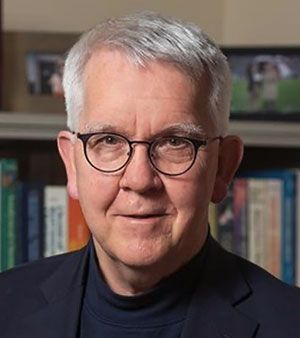Paul Bohn Receives SEAC Charles N. Reilley Award
Paul Bohn

Paul Bohn, the Arthur J. Schmitt Professor of Chemical and Biomolecular Engineering at the University of Notre Dame, is the 2022 recipient of the Society for Electroanalytical Chemistry (SEAC) Charles N. Reilley Award. The presentation of the award will take place on April 18, at 1:00 pm EDT at a Pittcon 2022 virtual awards session. The award is given in memory of Charles N. Reilly, one of the most distinguished analytical chemists of the 20th century who made seminal contributions not only to electroanalysis, but also optical spectroscopy, nuclear magnetic resonance (NMR) spectroscopy, chromatography, data analysis, instrumentation, and surface analysis. The award honors a scientist who has made significant contributions to electroanalytical chemistry.
Bohn was selected for the award based on his creativity and ability to focus on important problems, his reputation as an excellent colleague, teacher, lecturer, and mentor, and his broad perspective on electrochemistry, into which he incorporates his expertise in spectroscopy, separation science, and fluid mechanics. His contributions have ranged from the study of in-plane potential gradients for surface mapping to atomic-scale junctions, electrochemical zero-mode waveguides, and nanopore electrode arrays for redox cycling, single molecule electrochemistry, and ionotronics. Among his awards are the ACS Award in Spectrochemical Analysis (1997), the Theophilus Redwood Award of the Royal Society of Chemistry (2010), and the ACS Award in Electrochemistry (2017). He is an elected Fellow of AAAS.
During the awards session, Bohn will present a lecture titled. “Multifunctional Nanostructures for Electrochemistry of Single Atoms and Molecules.”
To register for the awards session, go to: https://us06web.zoom.us/webinar/register/WN_vrT2rlKCTx-yC1GK25Gx9Q
Scientists Break Century-Old Barrier to Synthesizing Anti-Bredt Olefins
November 18th 2024Researchers from UCLA have developed a novel method to synthesize and stabilize anti-Bredt olefins (ABOs), defying long-held beliefs about their instability. This breakthrough, published in Science, paves the way for new applications in synthetic chemistry by leveraging the unique reactivity of these geometrically distorted molecules.
NIR, IR, UV-vis, and NMR Spectroscopy Drive New Insights in Olive Oil Quality and Fraud Prevention
November 11th 2024A new review highlights the promising role of non-destructive spectroscopy techniques in enhancing olive and extra virgin olive oil (EVOO) quality assessments. By combining spectroscopy with imaging, researchers uncover innovative ways to determine product authenticity and improve quality control in olive oil production.